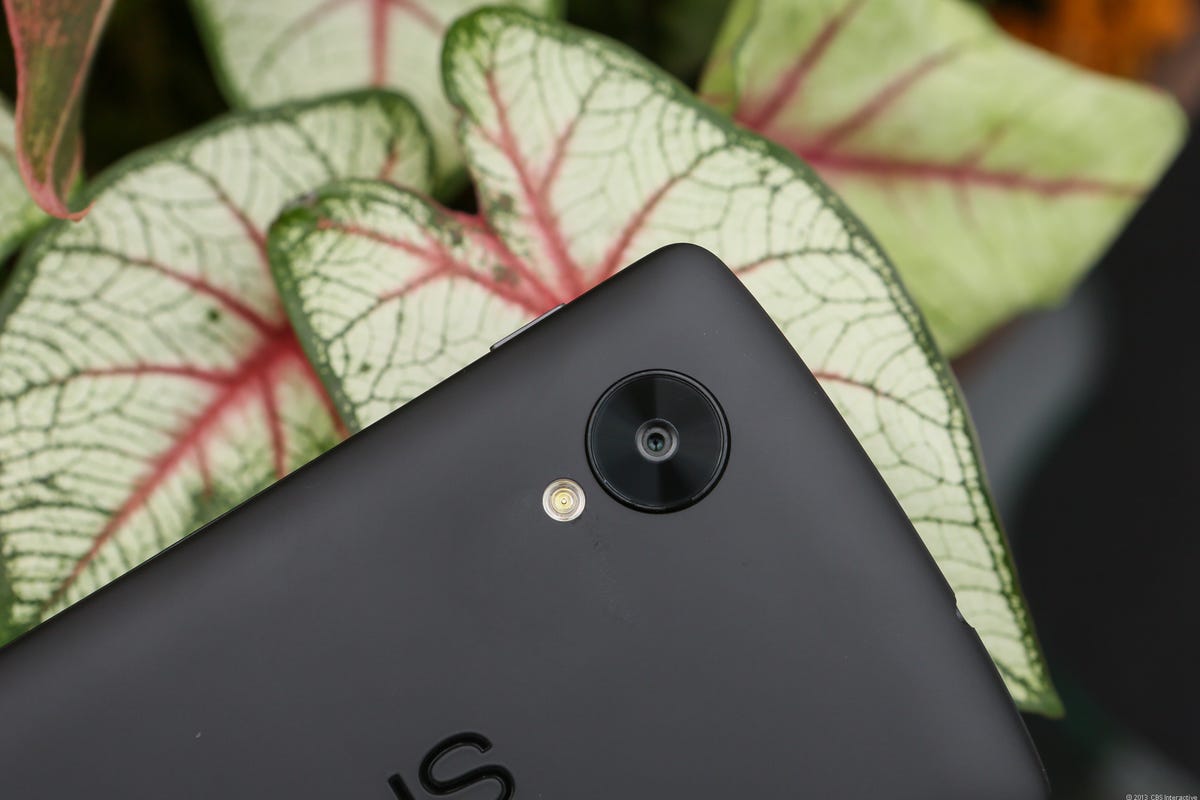
Shooting with the Nexus 5
The Nexus 5 is packing a few new features that aim to improve the camera quality. First, there's a slightly different-looking viewfinder UI that has two menus instead of one. You swipe up on the screen to get to all the different settings.
Second, Google added HDR+, an image-capturing technology that takes multiple shots at once using different exposure settings and combines them into the best possible photo. That's a welcome addition since the camera tends to struggle in auto mode. Most of the time, things got better when we used HDR+.
Lastly, there's a small, precise gyroscope in the camera lens for optical image stabilization. That's supposed to cut down on blurry photos that result from moving your hand too much while shooting.
Poised poodle
It's easy to make out the details of this pooch's fur and the details on the pavement in the photo. This was shot in automatic mode with no lighting or scene changes.
Sunlight in the park (auto)
For the next two photos we purposely shot into the sun to demonstrate the Nexus 5's HDR+ mode. Here in auto mode, the light overpowers the scene. Granted, most cameras would struggle here, but keep clicking to see how the camera improves as you move off auto mode.
Sunlight in the park (HDR+)
Thanks to HDR+, the sky has a natural blue hue and the leaves look noticeably orange. There's also more fine detail.
Rushing water
This photo was shot outdoors in automatic mode. It looks good, but check out the next image.
Rushing water with HDR+
HDR+ helps capture the flowing water with more detail. The benches also look much sharper than they do in the previous photo.
Landscape, auto
In automatic mode, the Nexus 5's camera makes the sky look washed-out, but the foreground is bright.
Landscape HDR+
With HDR+ turned on, the sky is blue and the trees look sharper.
Atrium
This shot was taken in auto mode with no flash. The scene is bright, but there is digital noise in the areas of the carpet and walls.
Atrium with HDR+
With HDR+ turned on, the photo looks much darker and there is less noise.
Driving at night
There's motion blur on the car in this night shot, captured in automatic mode. Of course, no smartphone camera will fare well at night, so this isn't unique to the Nexus 5. But, again, we wanted to show the progression from auto to HDR+ mode. So keep on clicking.
Nighttime with flash
Turning on flash and setting the camera to night mode helps it capture more fine details.
Nighttime with HDR+
But of the three nighttime shots, the one taken with HDR+ was the sharpest.
Portrait, auto mode
Indoor portrait shots in normal lighting and with automatic flash look natural.
Portrait, HDR+
Yet, this was the one time where the HDR+ feature didn't improve the shot. Even with the automatic flash, the colors look off.
Cozy close-up
In our testing, HDR+ also didn't do a great job of capturing close-ups indoors. You can seen the fuzzy fabric clearly, but it doesn't look sharp.
Desk collection
Without HDR+ turned on, close-up shots were crisp and natural.
Blooming tulips
These tulips look colorful, but flat. So, save HDR+ for well-lit outdoor scenes, and use auto mode for close-ups instead.
Photo with video
You can snap a photo while you're recording video. Here the scene looks bright and there's plenty of detail.
Almost sunset
There are several scene modes, including night, party, sports (moving objects), and sunset. The sunset mode captures the sun's rays well, with finer detail than automatic mode.

